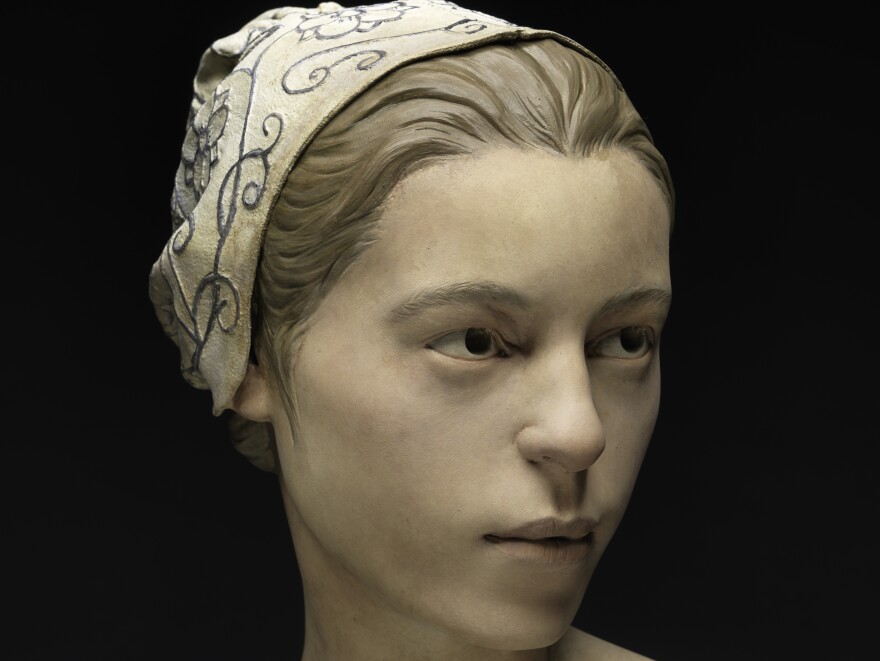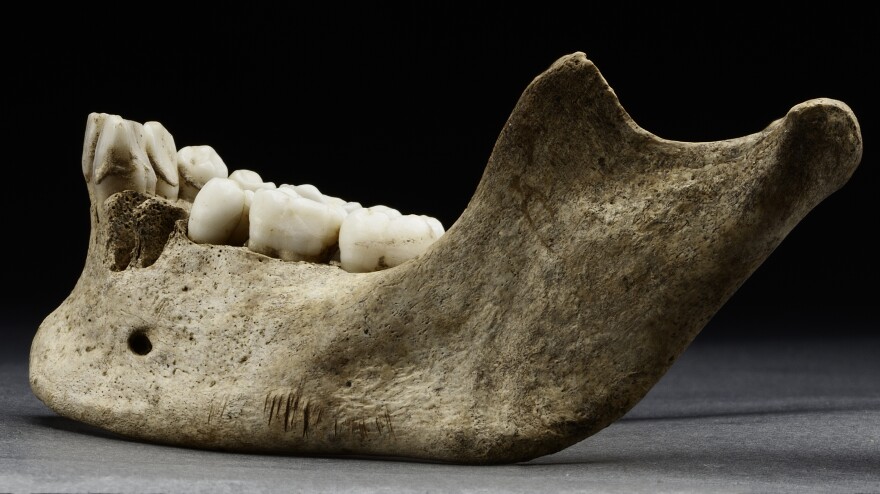"First they ate their horses, and then fed upon their dogs and cats, as well as rats, mice and snakes."
So says James Horn of the historical group Colonial Williamsburg, paraphrasing an account by colony leader George Percy of what conditions were like for the hundreds of men and women stranded in Jamestown, Va., with little food in the dead of winter in 1609.
They even ate their shoes. And, apparently, at least one person.
Scientists who have recovered human bones from the English colony at Jamestown announced Wednesday that they show the marks of cannibalism.
It's long been debated whether the colonists resorted to eating each other during "the starving time" of 1609 to 1610. The weather was harsh, and the hostile Indians were even harsher. Only 60 colonists survived that winter. This new finding would be the first hard evidence of cannibalism.
Last summer, Jamestown's chief archaeologist, William Kelso, dug up a human skull and a few other bones, along with some food remains. But these bones were different from others he'd found.

"The damage to the skull, and finding it with the other food remains, brought on serious thoughts that this was, indeed, evidence of survival cannibalism," Kelso says.
Kelso took the bones to the Smithsonian's Douglas Owsley, a renowned forensic anthropologist who has solved numerous criminal cases, as well as archaeological mysteries, based on human bones. Owsley determined that the Jamestown bones belonged to a girl, aged 14. They don't know anything about her, but have given her a name: Jane.
Owsley found numerous cut marks on the cranium and jaw, all apparently done after the girl had died. "There are clear chops to the forehead. They are very closely spaced," Owsley says.
These vertical cuts are evenly spaced and regular, and thus, he says, not the kind of wound you see in a struggle, but more likely made on a corpse. "There are four chops to the back of the cranium," Owsley says — apparently, they were made as the assailant was trying to open her skull. It was done in a very unskillful way, Owsley notes. Then, there was a final chop that completely fractured the skull open.
Owsley also found marks on the jaw that looked like the result of sawing with a sharp object, and also compression fractures made by a knife point. On the only fragment of leg bone the researchers had, there were more cut marks.

Forensic scientists usually can differentiate marks left by gnawing animals from those made by sharp instruments. Along with the written accounts, Owsley says the evidence points to cannibalism. "Given the context of all of this put together, and the multiple, multiple cuts," he says, "this is not anything that is done out of spite or vengeance or anything like that. It is, I think, a very clear intent."
The team has glued the skull back together and also sculpted a re-creation of what Jane would have looked like in the flesh, which they displayed today at the press conference: English, high cheekbones, regular features, pretty.
Smithsonian anthropologist Kari Bruwelheide was on the team. "When you have evidence of an event that's written down and recorded and talked about by survivors 400 years ago, it added weight to history. I mean, it truly is kind of a special kind of case," she said.
It's special also because archaeologists are skeptical about claims of cannibalism. Jonathan Haas at the Field Museum in Chicago says "cannibalism science" demands several types of evidence. The opening of the skull and the historical accounts are two good ones, but he says the other cut marks don't prove cannibalism, but only severe violence done to a girl's body.
Haas says scientists need a suite of several lines of evidence, all pointing to the same conclusion. "If I find cut marks showing the defleshing from the long bones, if I see cracking of the long bones, if I see cooking, then I can begin to much more definitively say that there was cannibalism being practiced," Haas says. He says archaeologically, more proof is still needed.
Given that this was England's first successful colony in the New World, and the nature of the claim, it's likely that the cannibalism finding will generate a lively scientific debate.
Copyright 2020 NPR. To see more, visit https://www.npr.org.



